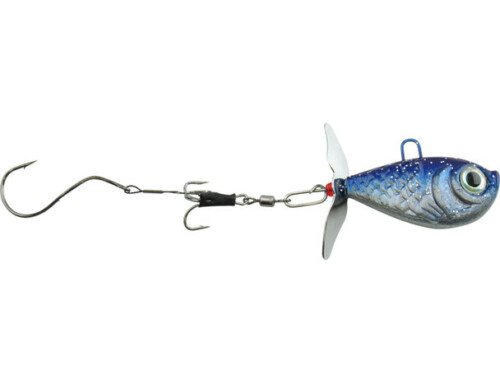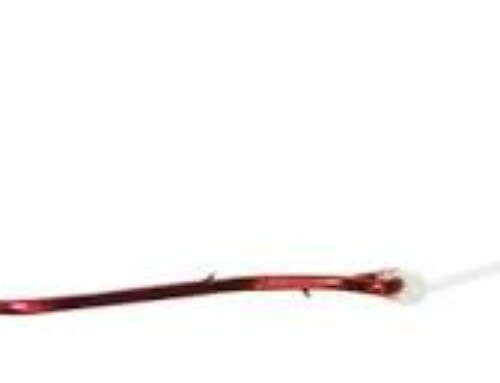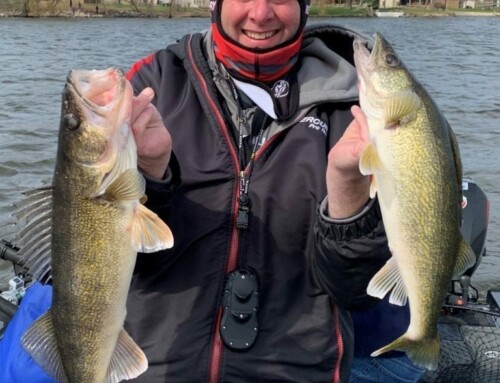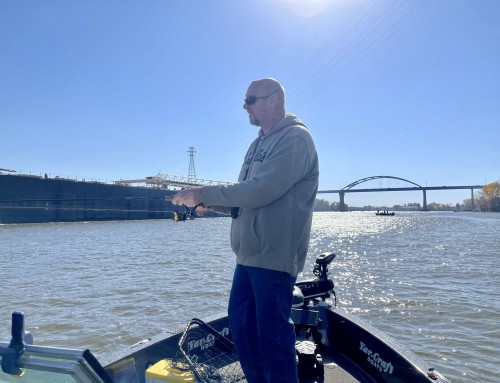Puccio, who fishes much of the Midwest’s best walleye waters while fishing tournaments, also guides in his free time. Not long ago, Puccio says it was unusual to see another boat out trolling this time of year, but “now a lot more people are doing it then when I first started cold water trolling about 15 years ago. It’s awesome fishing with the big walleyes putting on the feedbag for the cold months of winter.” Most of the late fall fishing done by Puccio, Barefield, and Horoky is done late in the afternoon and into the first few hours of twilight.
Some nights when Puccio goes out, he may not see another angler for the whole evening. But, while below freezing temperatures may seem extreme to most fishermen, many guides and professionals capitalize on this late cold water bite. They say that the fishing gets better as the weather get colder.
“This bite lasts until ice covers most of the lakes,” Puccio told me. “I’ve fished nights when the lakes are almost totally covered in ice. I’ve had my rod guides frozen over where you have to hit the rod on the boat’s side to open the rod guides, so that you’re able to reel in a fish. I’ve also fished in snow storms and had to break ice on the shoreline to reach open water.”
The rewards are definitely worth it to Tony Puccio, who says it is hard to catch a fish under 25 inches with numerous fish over 30 inches and weighing 10 to 12 pounds and more. The walleyes’ bellys look like mini- footballs jammed with baitfish as the fish prepare for the hard water of winter and their own slower metabolism. Contrary to most traditional walleye wisdom, which involves deep water jigging and rigging, Puccio catches most of his late season walleyes in shallow water under 10 feet deep.
The areas that Puccio, Barefield, and Horoky like to fish, will top off at 3 to 5 feet with a fast break down to 7 or 8 feet. Puccio says that some areas will break fast into 10 to 12 feet of water, but most of the fish are holding on the initial wall in 3 to 5 feet of water. According to these guides and professionals, the fish seem to steadily feed throughout the late season and before total freeze-up. The key or trick is to find the weed edges, rock reefs, or sand bars that are holding the fish while you’re on the water. Then, once you find the walleyes, catching them is not that difficult.
Puccio primarily trolls Rapala stickbaits, Mann’s Minus 1 crankbaits, Reef Runner Ripsticks, Bomber Long A’s, and Storm Thundersticks, for most his late season success. The best colors seem to be fire tiger, black/chrome, purple, and blue/chrome in all crankbaits. These colors seem to match the forage that the walleyes are now feeding on; smelt, alewives, ciscoes, and sucker minnows. Depending upon the lure, speed of the boat, and line weight and diameter of the line that you’re using Puccio lets out between 100 to 150 feet of Berkley Fireline and then attaches 5 feet of Vanish fluorocarbon line to his lure. The fluorocarbon line is invisible when under water and seems to make a big difference in the fall and early winter trolling when the water seems to be clearer and shallow water fish can be easily spooked. The prime trolling speed is between 1.0 and 1.8 mph. which may seem slow to most average anglers.
Puccio attaches his lures to the Off Shore planer boards (OR-12), which has an option of attaching a blinking light to the boards which allows you to see where your planer board is in the dark and if you have a strike and a fish on your line. Another technique Puccio uses and suggests other anglers try is to troll in an S pattern and not a straight line. Most bites seem to come on the turns, no matter if it is an inside or outside turn. The outside line picks up speed which can trigger a reaction strike. The inside line and lure which is neutrally buoyant, floats up on the turns and can also cause a strike. Puccio adds,” most of the above mentioned lures run 7 to 10 feet down, so they’re beating the lake’s bottom while you’re slow trolling. When you make a turn, your lure rises while in that critical 3 to 5 feet zone. The slight hesitation happens right where the fish are sitting on top of the reef, rock bar, or weed edge. This is where you’ll often catch your biggest walleye.”
Tony also likes to troll lead core line in shallow water at times because much of this fishing is contour trolling where lead core line really shines and presents your crankbaits in a manner that walleyes find extremely attractive. If you’re unfamiliar with leadcore trolling, do a little research so that you know the basics and as you fish more this way the easier you’ll find it.
This late season walleye trolling can be done successfully on many of my local Wisconsin waters like Lake’s Mendota, Wabesa, Monona, Wisconsin, and Winnebago. Anglers who travel to Michigan’s Little Bay de Noc or Ohio’s Lake Erie can also use these late season tactics for “hawg” walleyes. Dress right and be ready for some trophy size walleyes while trolling, even if the snow flies.
Some of the largest walleyes that I’ve ever caught, have come from Lake Erie, Lake Ontario, Little and Big Bay de Noc, and the Bay of Green Bay during the month of December. My largest walleye was caught a few years back on December 20th. The new clothing, boots, and accessories now make angling in cold weather much more comfortable and give you the opportunity for double digit walleyes. Do a little research, have the proper gear, and you’re now in for some big fish and maybe the fish of your lifetime! You may always contact me at; www.garyengbergoutdoors.com .
Source Gary Engberg outdoors





